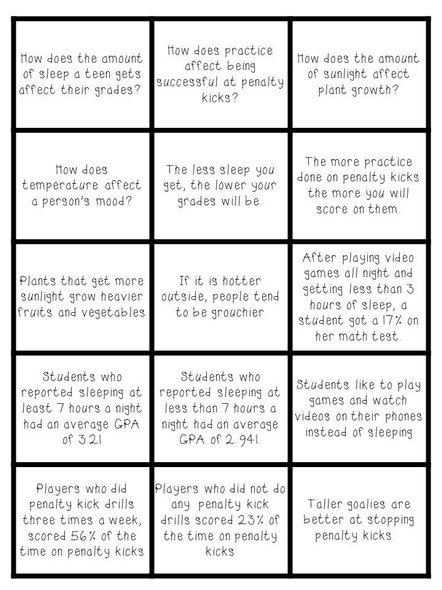Description
6 worksheets with a graphic organizer for helping students analyze data and use it to create a scientific explanation using NGSS Physical Science content. Each data set in this series has a written short introduction that should help with the interpretation of the data for students.
This set includes motion, sound, and thermal energy. Supports lessons for NGSS Science and Engineering Practices of Analyzing and Interpreting Data, and Constructing Explanations.
Topics Covered:
- Roller Coasters and Energy: Supports NGSS MS-PS-3-2 A graph of maximum hill height and top roller coaster speed
- Roller Coasters and Construction Materials: Supports NGSS MS-PS-3-2 and NGSS MS-PS-3-5. A graph of different materials used to build roller coasters and the year they were built along with the top speed. Students can be challenged to find multiple research questions that can be answered using the data presented in this graph.
- Sound and Hearing: Supports NGSS MS-PS-4-1 when used along with a discussion about wave amplitude and sound volume. This is based on data collected by students as part of a research project into hearing safety and school settings.
- Properties of Thermal Energy Storage Materials: Supports NGSS MS-PS-3-4. Students are given a graph that displays the relationship between density and specific heat for selected solids and liquids to be considered for thermal energy storage. This graph can be challenging because if you look at the general trend of density compared to specific heat there is a negative relationship, however, if you also consider the state of matter you might notice a clustering of the liquids on the graph.
- Thermal Conductivity and Temperature: Supports NGSS MS-PS-3-4. Students can identify a negative linear trend in the thermal conductivity of the materials as they heat up. Students can be challenged to brainstorm reasons for this trend as an extension of the lesson.
- Very Low Temperature and Thermal Conductivity: Supports NGSS MS-PS-3-4 This data has a non-linear trend with a definite optimal zone. This data set is good for discussion of optimization of conditions and that not all trends are linear/non-linear lines of best fit.
Key Features:
- NGSS DCI Connections: Each data set is accompanied by a short introduction to aid students in interpreting the data effectively.
- Teacher Notes: Detailed guidance for educators on implementing the worksheets.
- Variety of Topics: Covers areas like motion investigation, specific heat investigation, data analysis, thermal insulators investigation, and magnetic force investigation.

























